Trees with vibrant foliage can completely transform a landscape, bringing color and life to every season. Some species stand out for their stunning hues, with colors that shift as the year progresses. These trees offer beauty throughout the year, from spring blossoms to the deep shades of autumn. They also add texture and variation to gardens or parks, making each season unique. Let’s explore some of the most striking trees that bring vibrant colors no matter the time of year.
Japanese Maple (Acer palmatum)
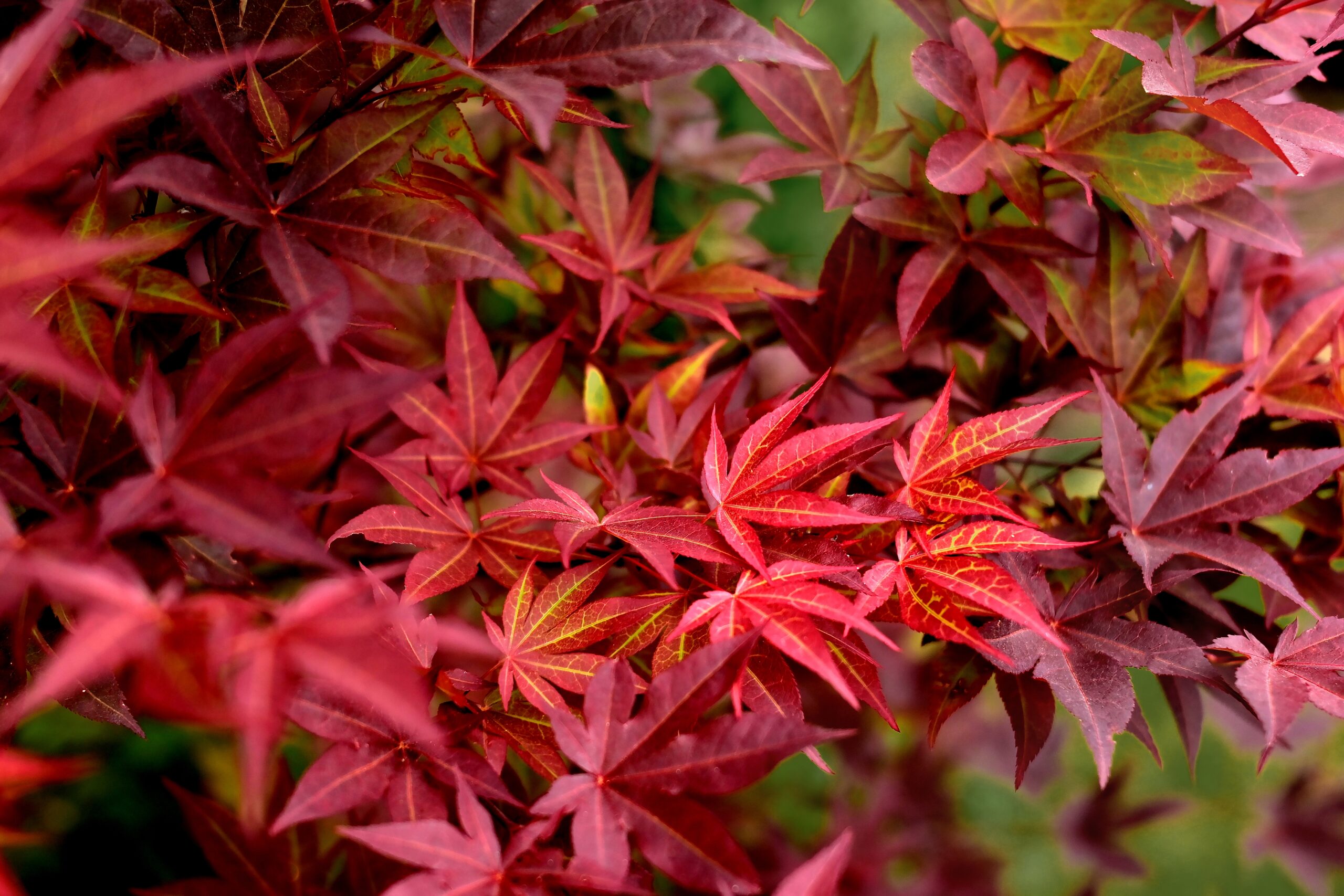
The Japanese Maple is renowned for its delicate leaves and brilliant colors. In spring, its foliage emerges in vibrant reds or greens, depending on the variety. As summer progresses, the leaves darken slightly but retain their striking beauty. Come fall, the tree lights up with brilliant reds, oranges, and yellows. Its compact size makes it a perfect addition to smaller landscapes, while its layered branches provide a beautiful structure.
Redbud (Cercis canadensis)
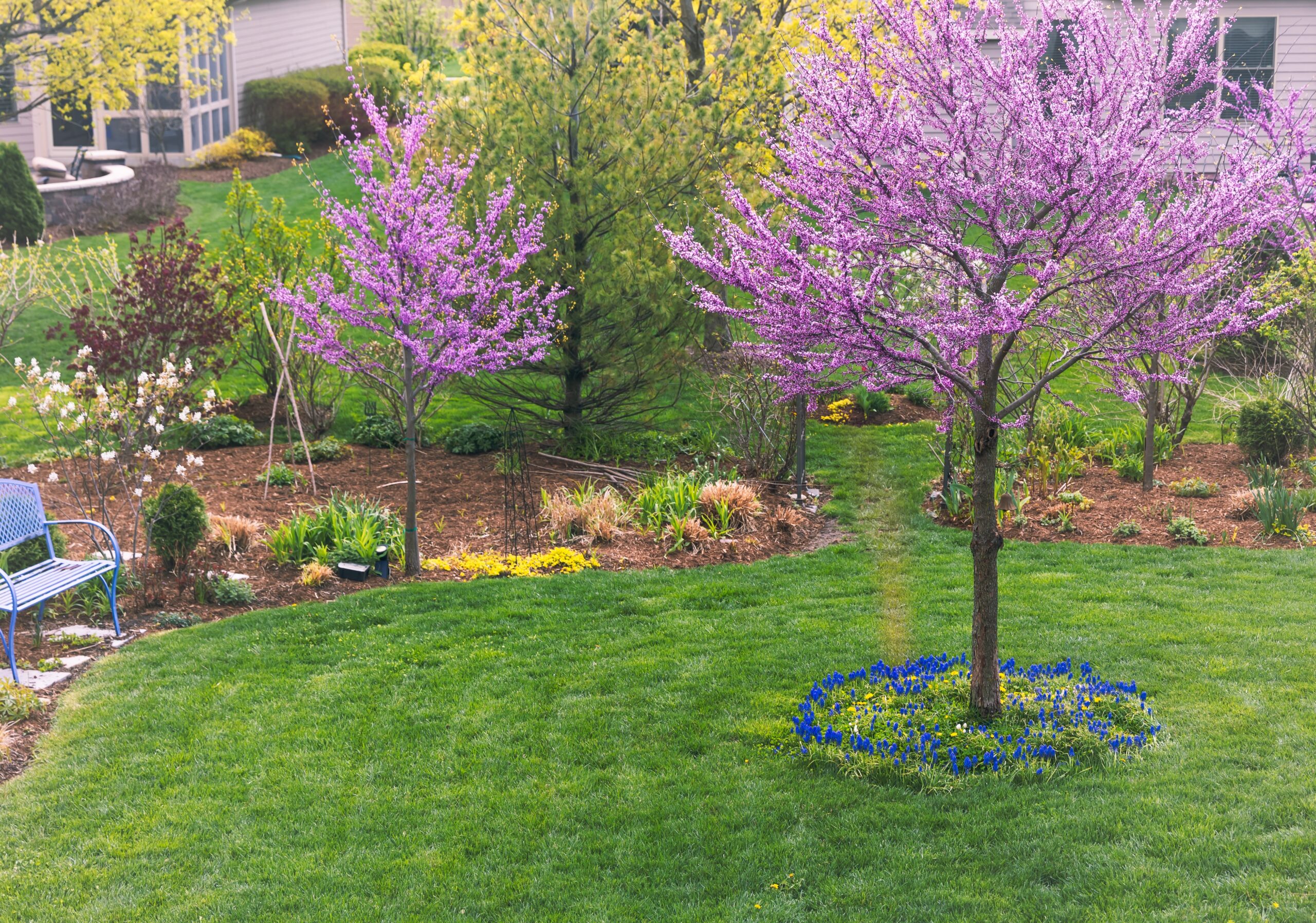
Redbuds are small but mighty trees, blooming with clusters of vibrant pink flowers in early spring. As the flowers fade, heart-shaped leaves in rich green take over, staying lush throughout summer. In fall, the leaves turn golden, offering another burst of color before winter arrives. Its unique branching structure adds interest even in winter, making it a year-round delight in any garden.
Sweetgum (Liquidambar styraciflua)
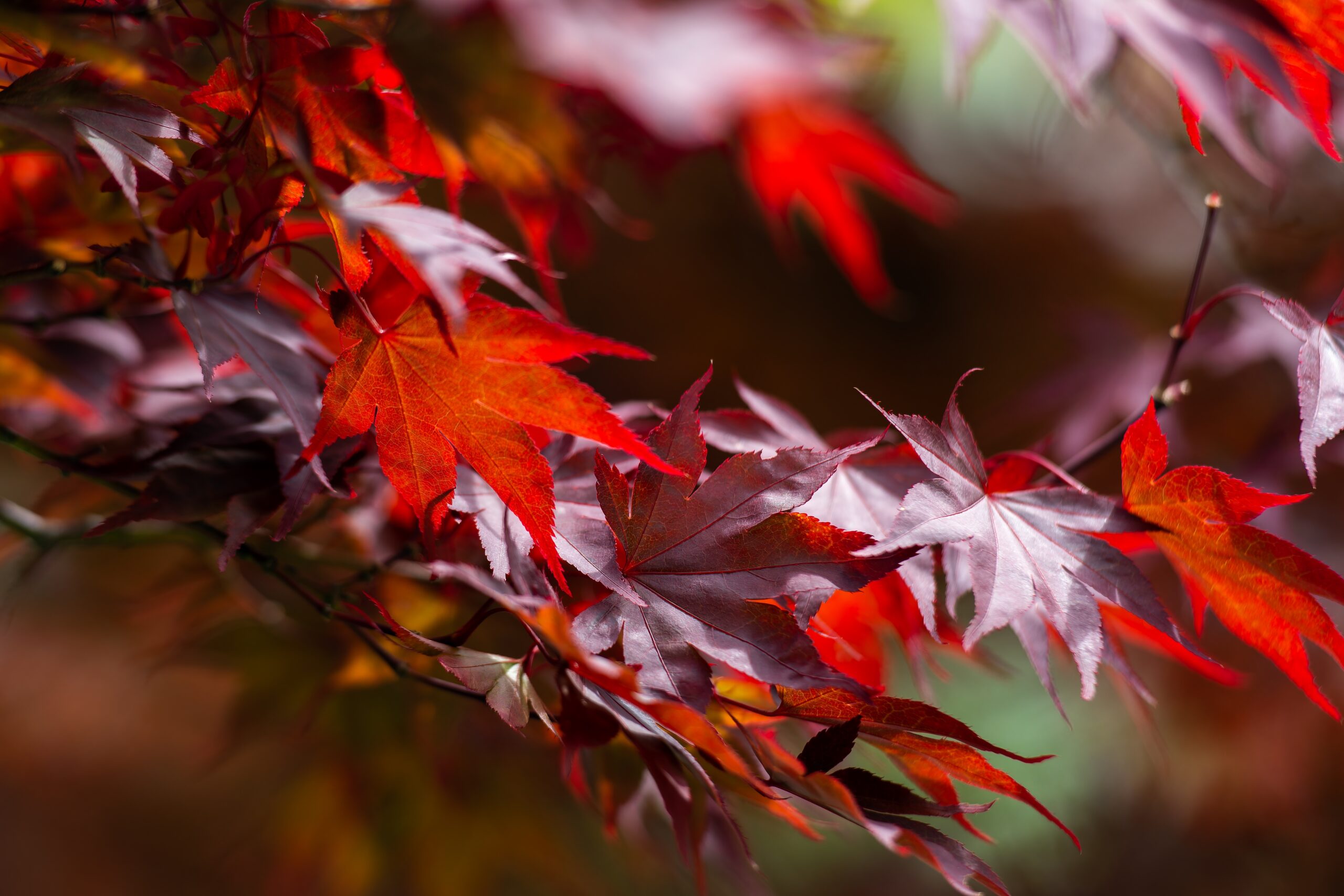
The Sweetgum tree is a standout for its star-shaped leaves and multi-seasonal beauty. In spring, its foliage starts as a bright green, then deepens throughout the summer. As fall approaches, the leaves turn a mix of red, orange, yellow, and even purple, creating a rainbow effect. The tree also produces spiky seed balls, adding texture and interest throughout the year. Its tall, upright growth makes it an excellent shade tree.
Copper Beech (Fagus sylvatica ‘Purpurea’)
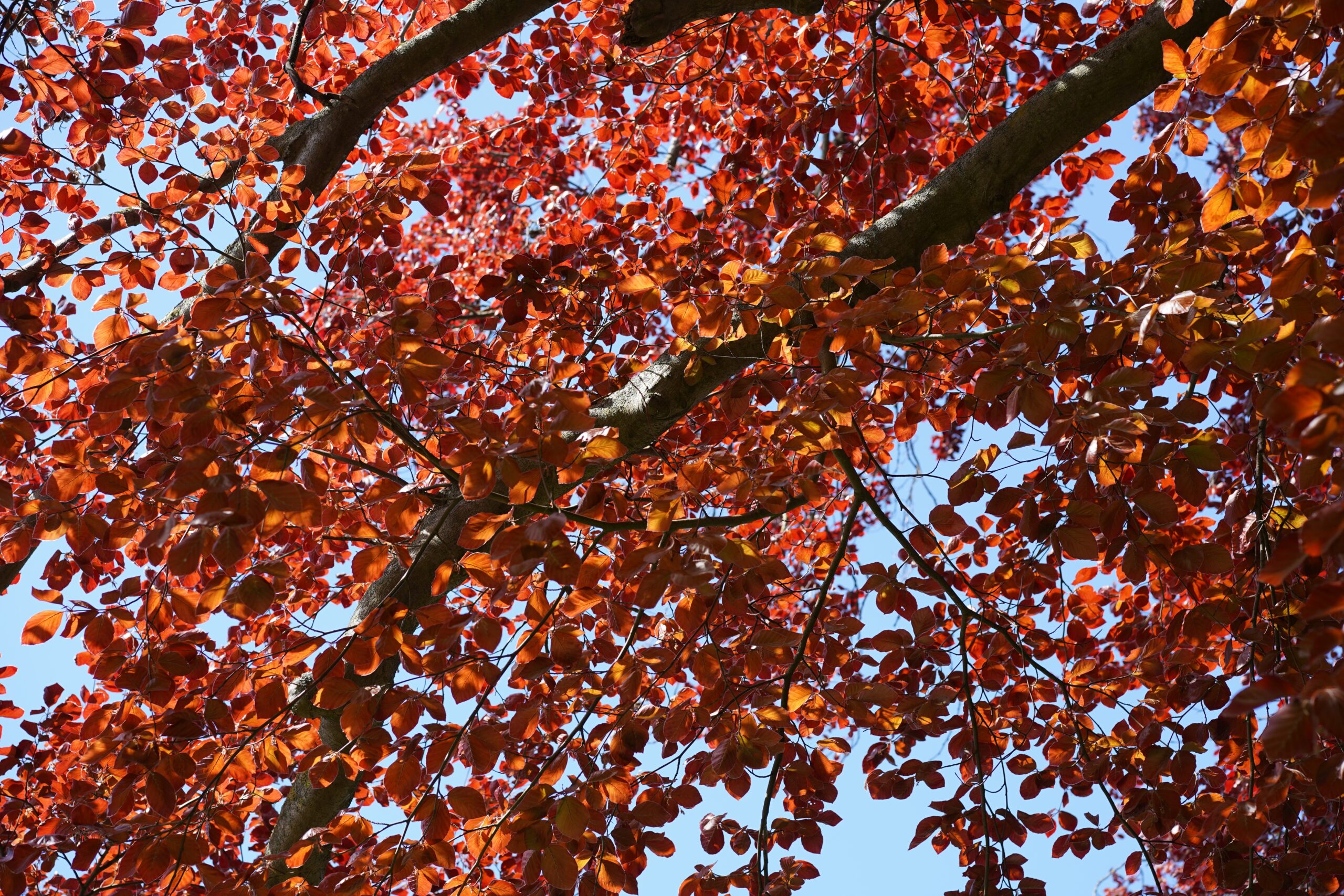
Copper Beech is known for its stunning deep purple foliage, which maintains its vibrant color through spring and summer. As fall arrives, the leaves shift to a coppery bronze, offering a warm glow in cooler months. Its smooth, grey bark adds another layer of visual interest, especially in winter when the tree is bare. The broad canopy provides excellent shade, making it a favorite in large landscapes.
Flame Tree (Brachychiton acerifolius)
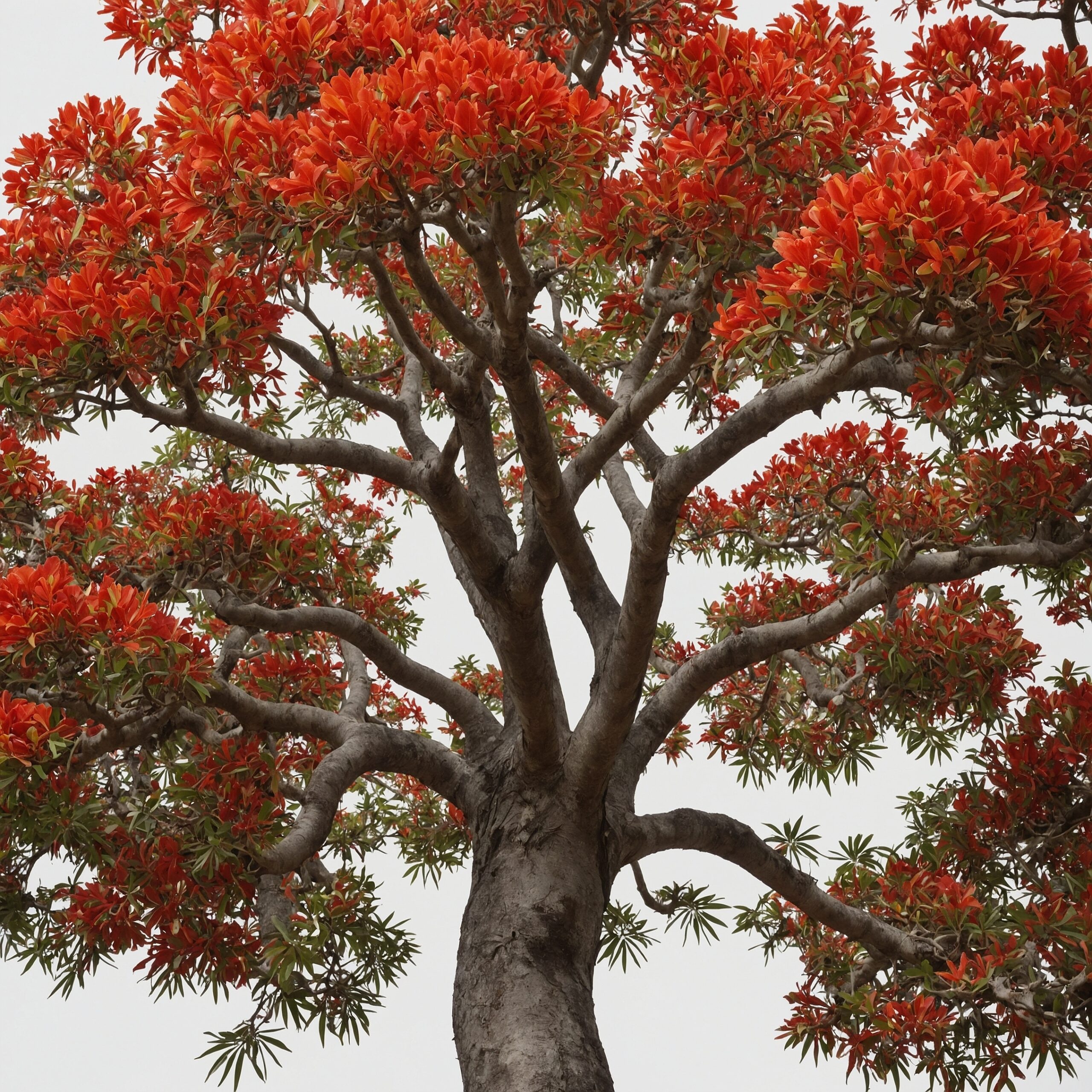
The Flame Tree lives up to its name with its fiery red flowers that bloom in late spring or early summer. When in full bloom, the tree appears as if it’s ablaze, standing out against the greenery around it. Once the flowers fall, bright green foliage emerges, creating a lush summer look. Its drought resistance makes it perfect for warmer climates, while its vibrant display ensures it’s always a focal point.
Eastern Red Maple (Acer rubrum)
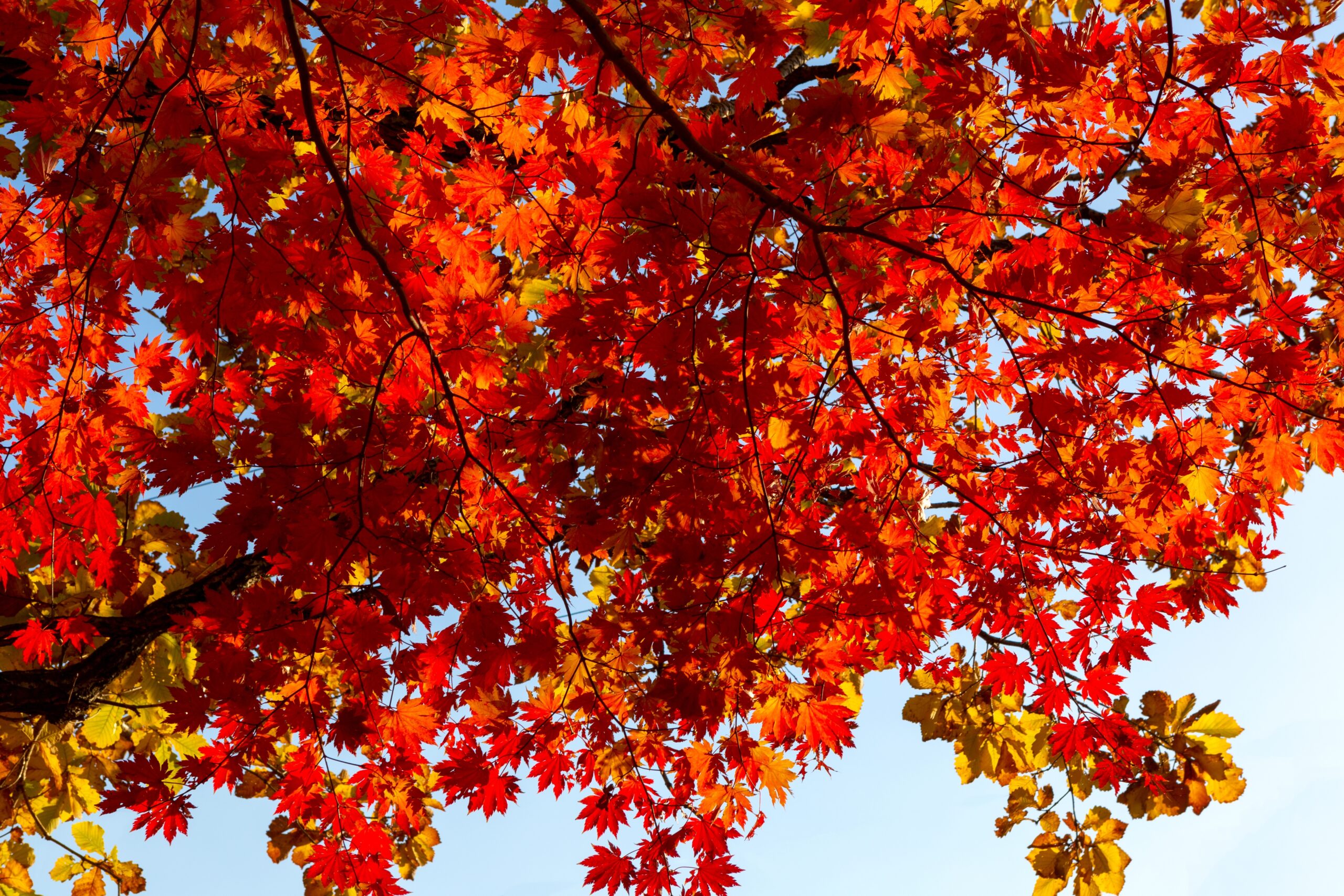
The Eastern Red Maple is a showstopper, particularly in the fall when its leaves turn a vibrant red. In spring, red flowers and new leaves appear, providing early-season color. Summer brings a rich green canopy, perfect for shade. By autumn, the tree erupts into a blaze of red and orange, often outshining its neighbors. Its versatility and fast growth make it a popular choice for parks and home gardens alike.
Persian Ironwood (Parrotia persica)
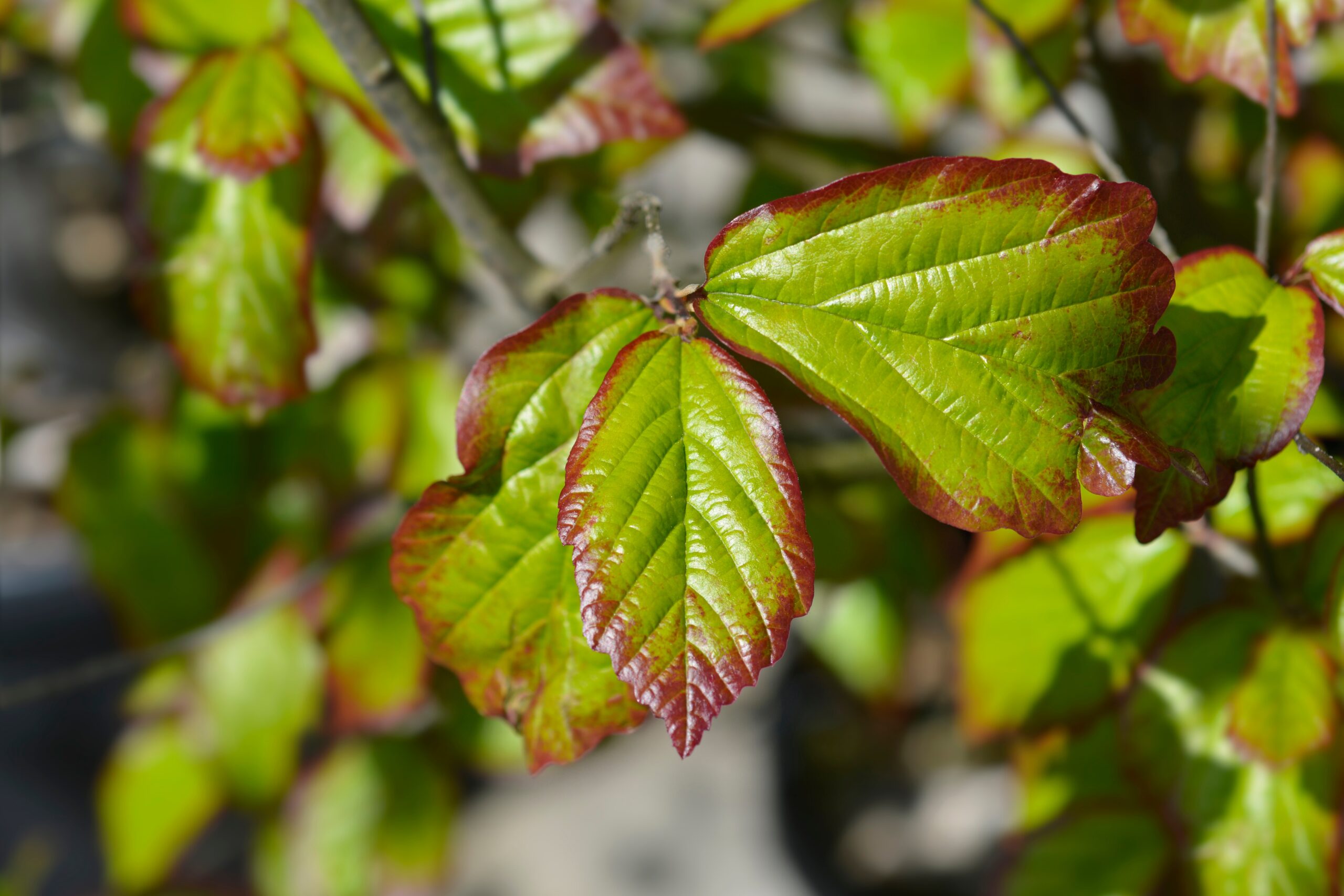
Persian Ironwood is a lesser-known tree with exceptional year-round interest. Its leaves start in spring with a reddish tint, turning a deep green through summer. As autumn arrives, the foliage becomes a stunning mix of red, orange, and yellow. Even in winter, the tree’s bark peels away in patches, revealing a mosaic of colors. Its compact size makes it a great choice for smaller gardens looking for big impact.
Golden Chain Tree (Laburnum)
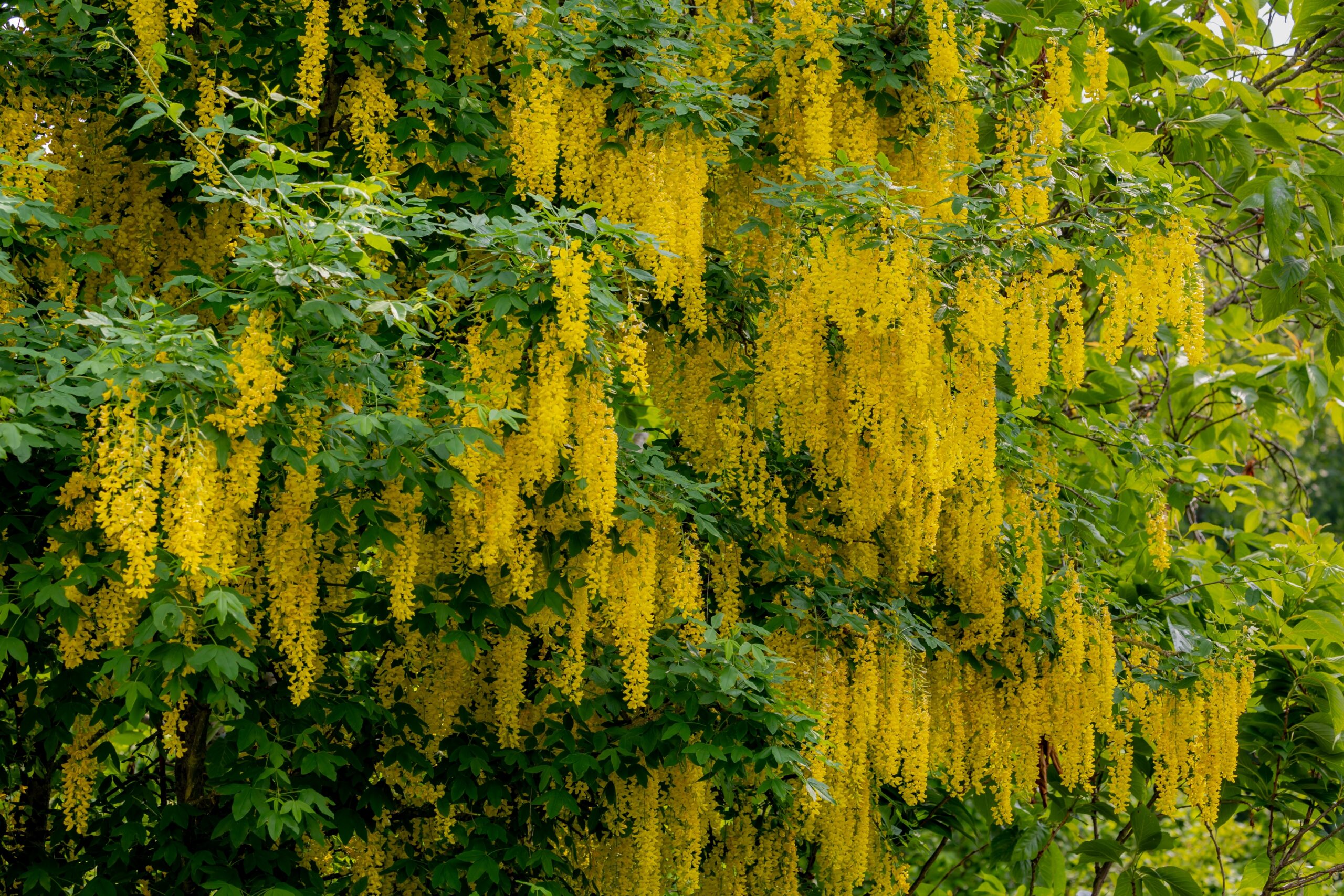
The Golden Chain Tree is admired for its cascading yellow blooms. In late spring, the tree bursts with long, golden flower clusters that hang like chandeliers. Its delicate green leaves provide a subtle contrast, creating a lush background. Although it prefers sunny spots, it can tolerate partial shade, making it versatile. The Golden Chain Tree is perfect for smaller gardens due to its compact size.
Crape Myrtle (Lagerstroemia indica)
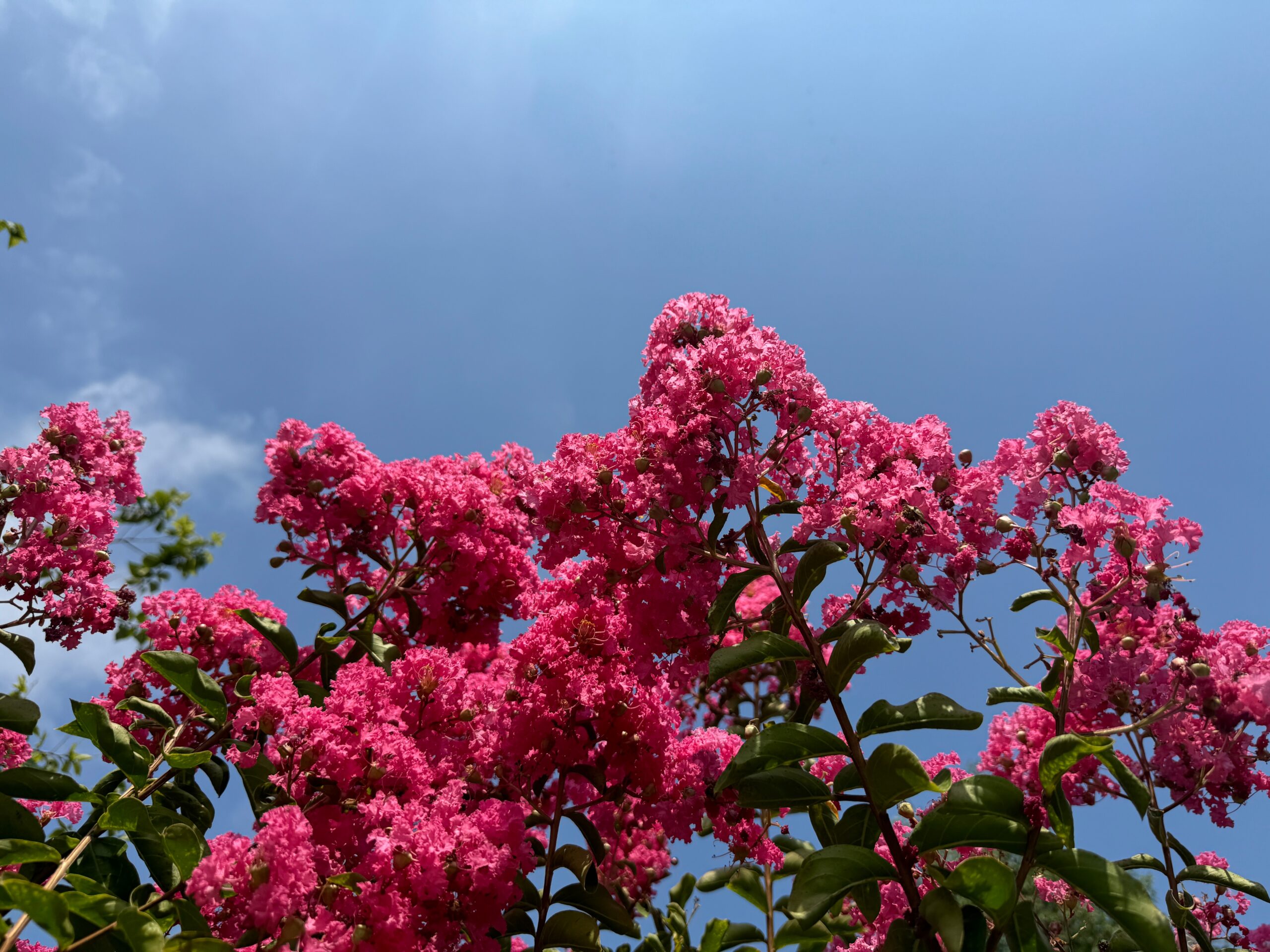
Crape Myrtle offers year-round interest with its colorful blooms and vibrant bark. In summer, it produces clusters of pink, purple, or white flowers. Its foliage turns a striking red or orange in fall, providing a vibrant display. Even in winter, its smooth, peeling bark adds texture to the landscape. This drought-tolerant tree thrives in warm climates and can grow as either a shrub or tree, depending on the space available.
Dogwood (Cornus florida)
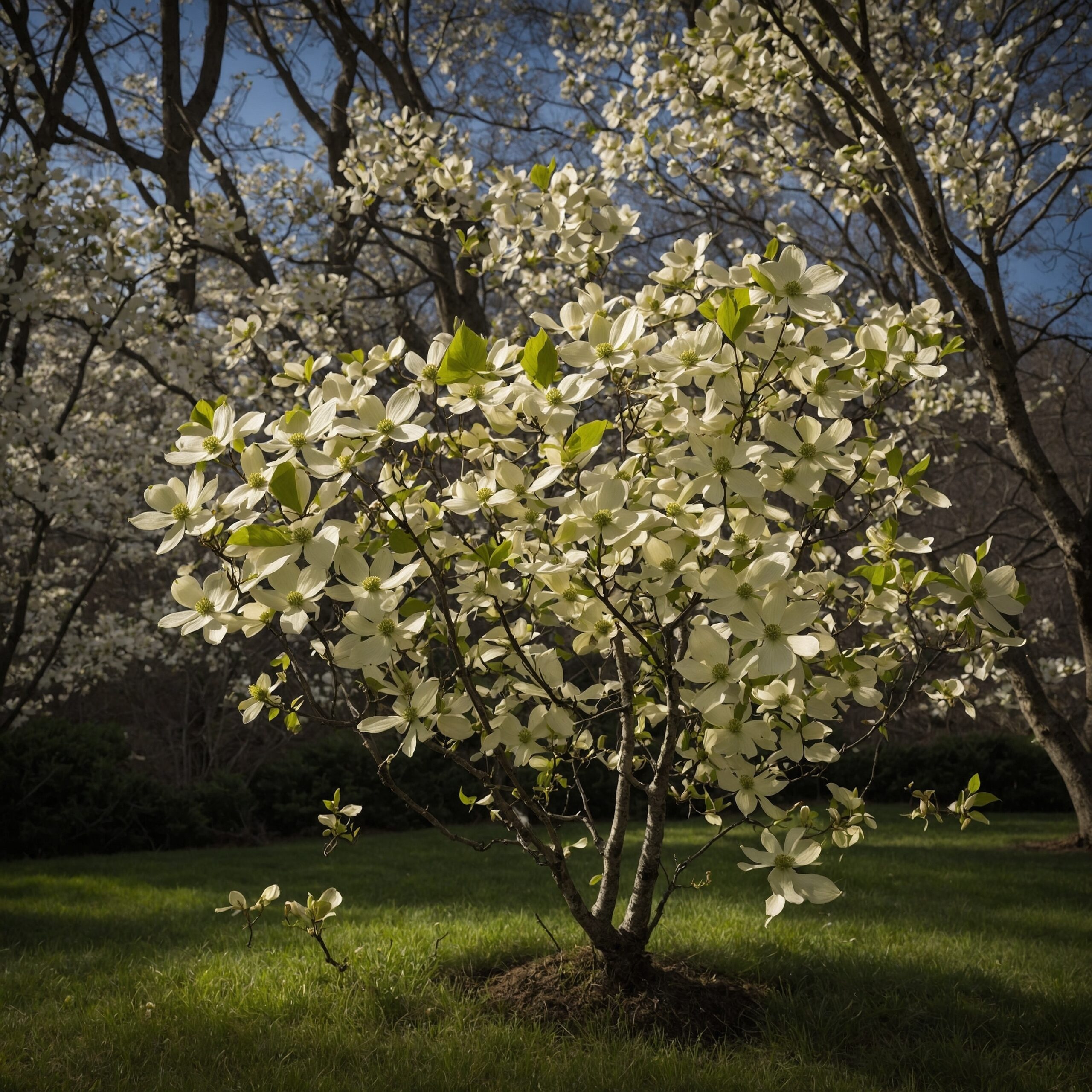
The Dogwood is a showstopper in every season. In spring, it blooms with white or pink flowers that brighten any garden. As summer fades, the dark green leaves turn a beautiful shade of red. The tree also produces red berries in fall, which attract birds. Even in winter, the Dogwood’s graceful branching structure adds interest. Its moderate size makes it ideal for residential landscapes.
Scarlet Oak (Quercus coccinea)
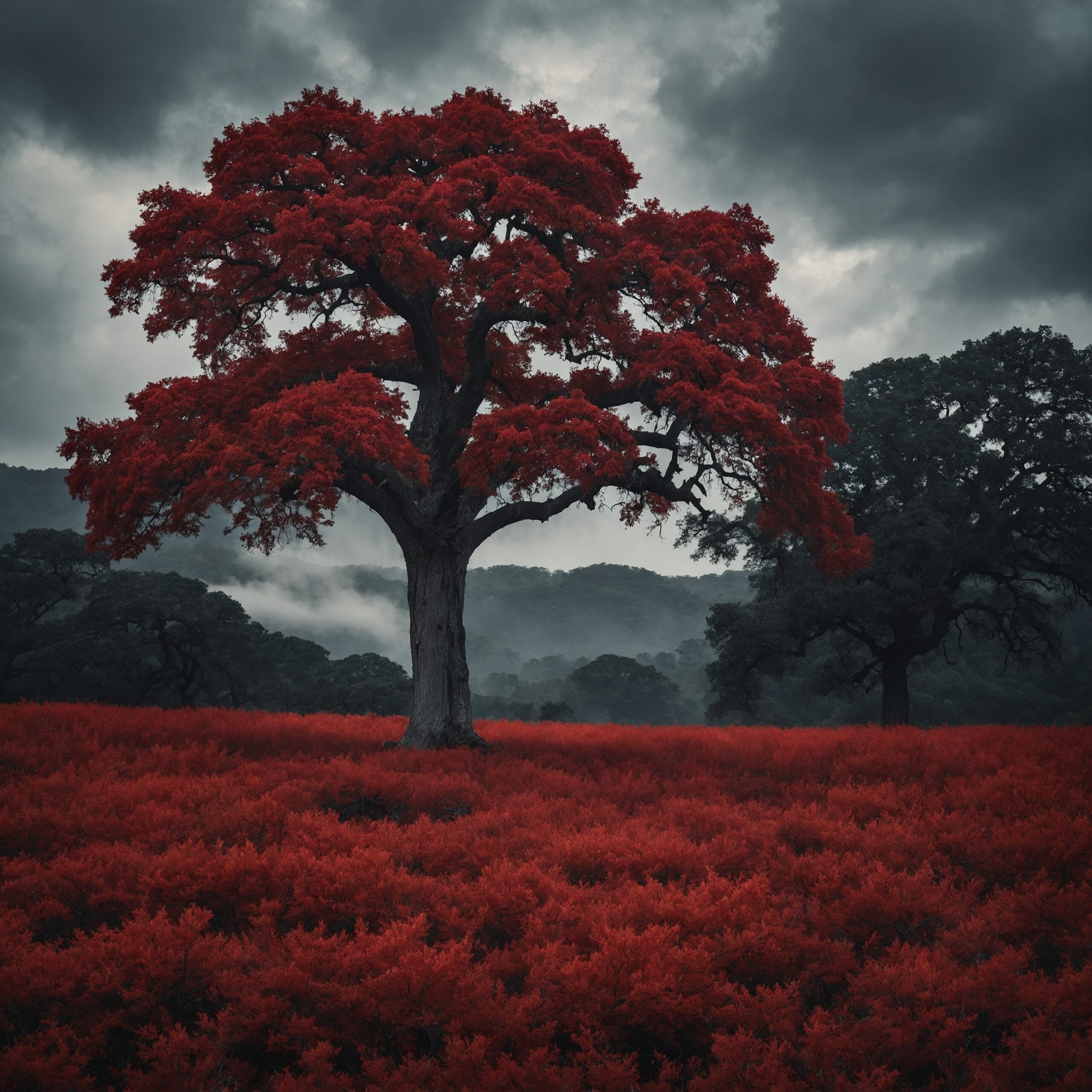
The Scarlet Oak lives up to its name with brilliant red leaves in autumn. Throughout the summer, its green foliage provides ample shade. As fall approaches, the leaves turn a deep scarlet, creating a dramatic display. This oak is a fast grower, reaching impressive heights, making it perfect for large landscapes. Its distinctive bark adds visual appeal even during the winter months.
Smoke Tree (Cotinus coggygria)
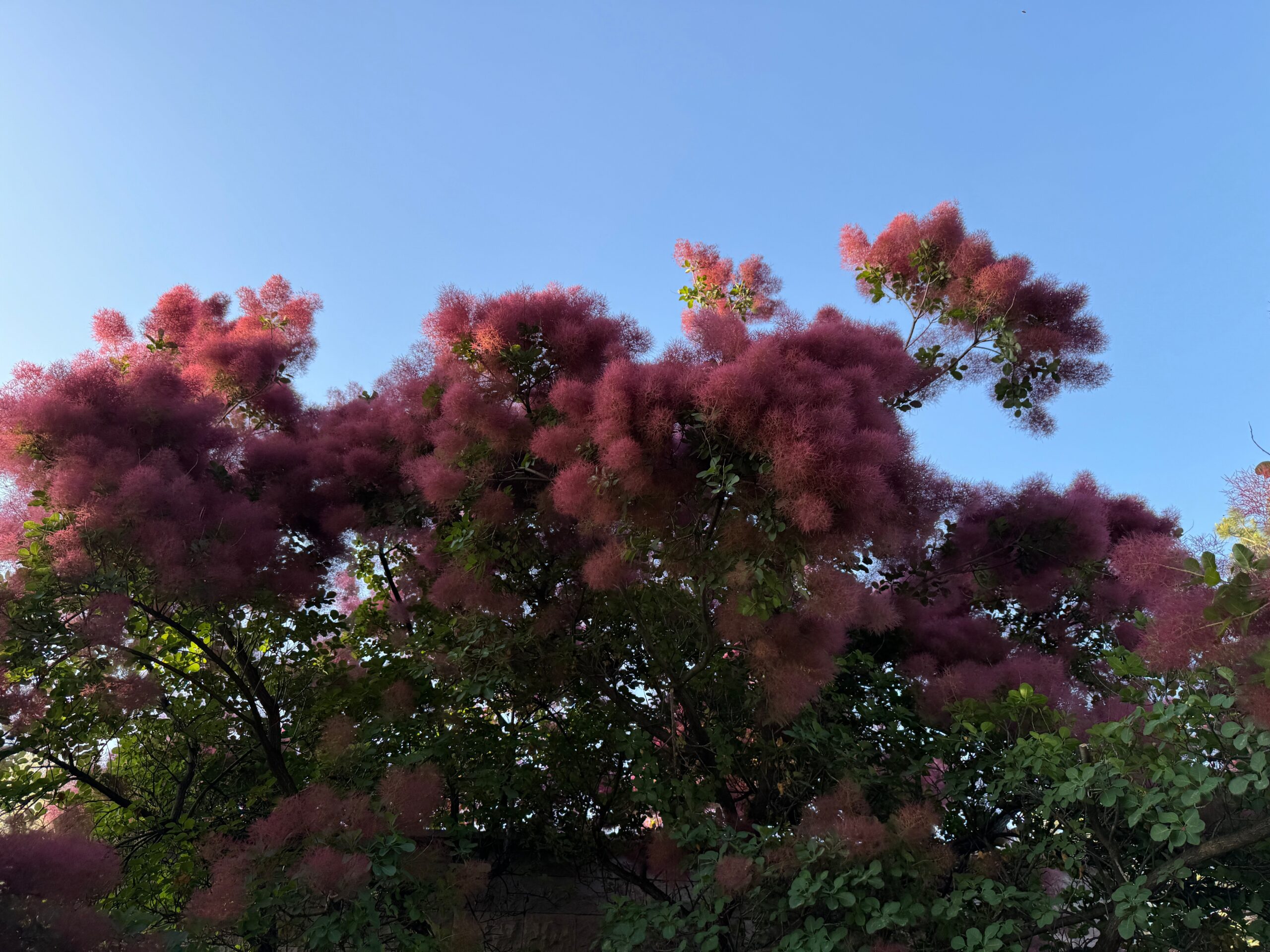
The Smoke Tree is known for its feathery, smoke-like plumes that appear in summer. Its deep purple or green leaves provide a rich backdrop, transitioning to shades of orange, red, and yellow in fall. The tree’s unusual shape and texture make it a standout in any garden. It thrives in well-drained soil and can handle full sun, making it a low-maintenance option for vibrant color.
Tricolor Beech (Fagus sylvatica ‘Tricolor’)
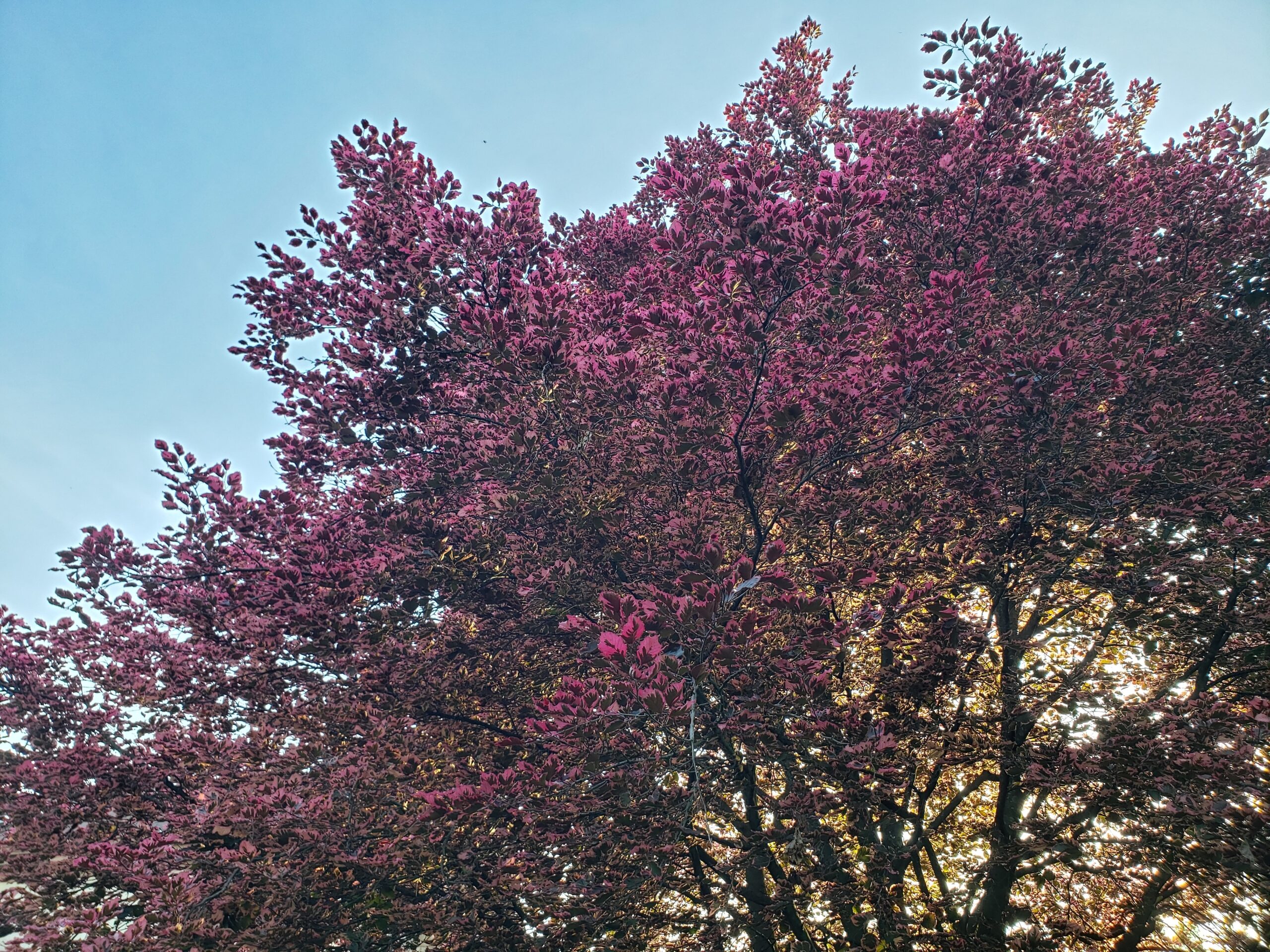
The Tricolor Beech is an eye-catching tree with its variegated leaves. The foliage features shades of green, pink, and white, which change with the seasons. In spring, the pink tones dominate, gradually giving way to green and white margins in summer. By fall, the leaves turn a soft bronze, adding warmth to the landscape. Its smooth grey bark adds another layer of interest, even in winter.
October Glory Maple (Acer rubrum ‘October Glory’)
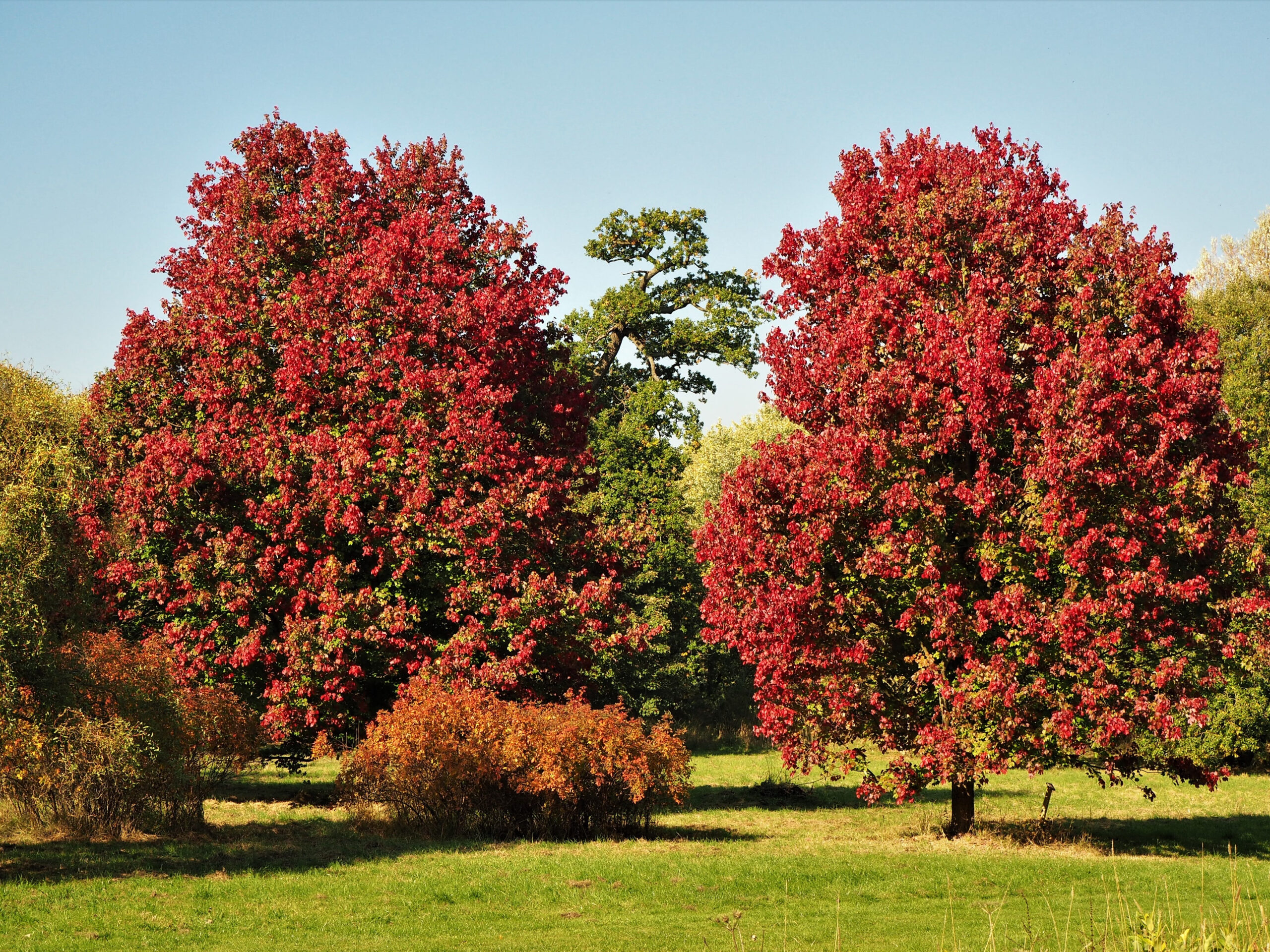
October Glory Maple is renowned for its brilliant fall color. Throughout the summer, its green leaves offer dense shade. As fall arrives, the tree transforms into a glowing spectacle of red and orange. This fast-growing maple is perfect for providing quick shade in large spaces. It also adapts well to various soil types, making it versatile for different landscapes.
This article originally appeared on Rarest.org.
More from Rarest.org
1956 Lincoln Wheat Penny Value Guide

The Lincoln penny or Lincoln cent in 1956 bears a value of one cent. It is made of 95% copper and 5% zinc, and tin. Read More.
1960 Washington Quarter Value Guide

The 1960 Washington quarter comprises 90% silver and 10% copper. However, by 1965, the US Mint decided to remove all silver content from US coins, including the Washington quarter. Read More.
11 Rarely Discussed Myths from Ancient Civilizations
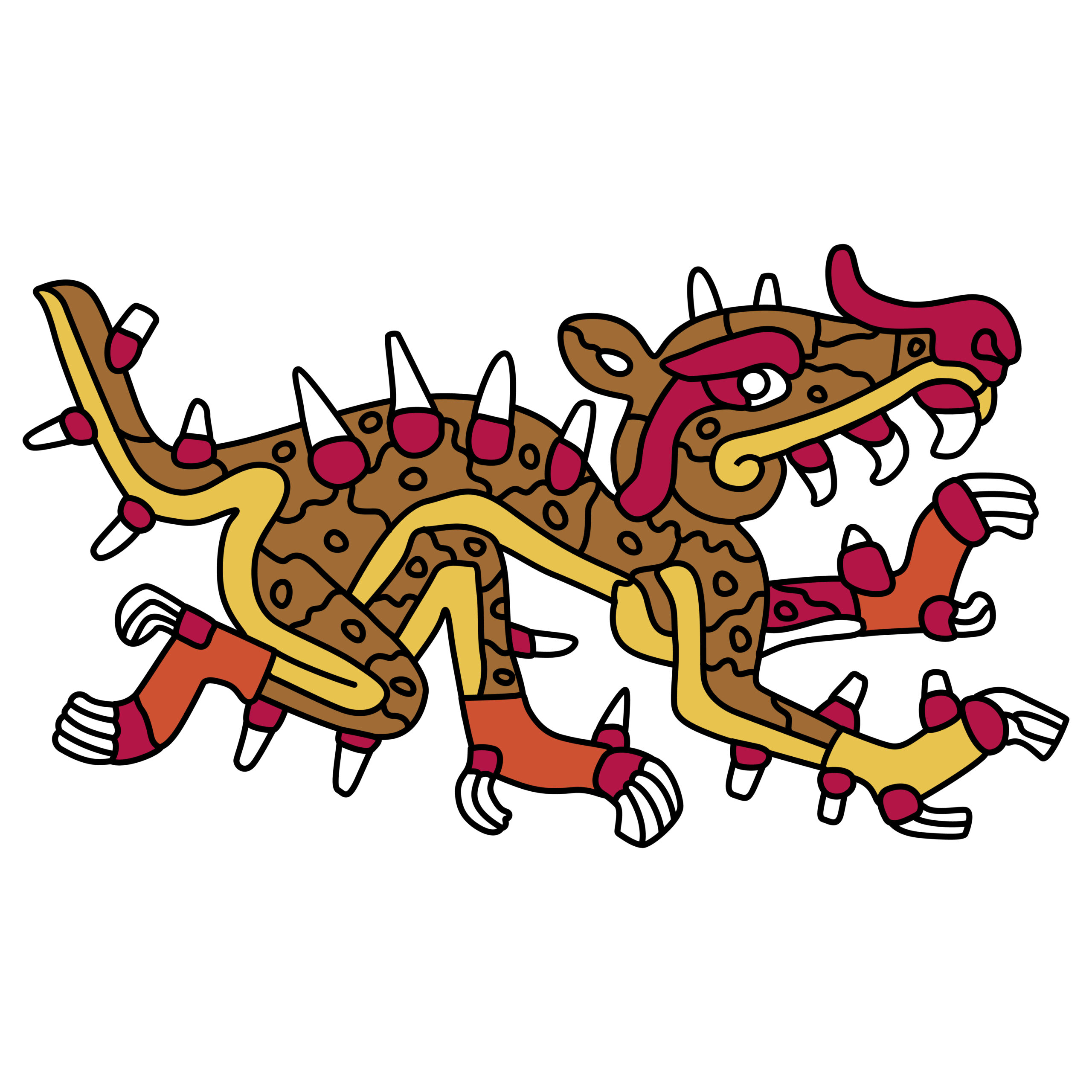
Ancient civilizations spun tales that shaped their cultures, beliefs, and worldviews. While many of these myths are well-known, others remain rarely discussed, hidden in the shadows of history. Read More.
